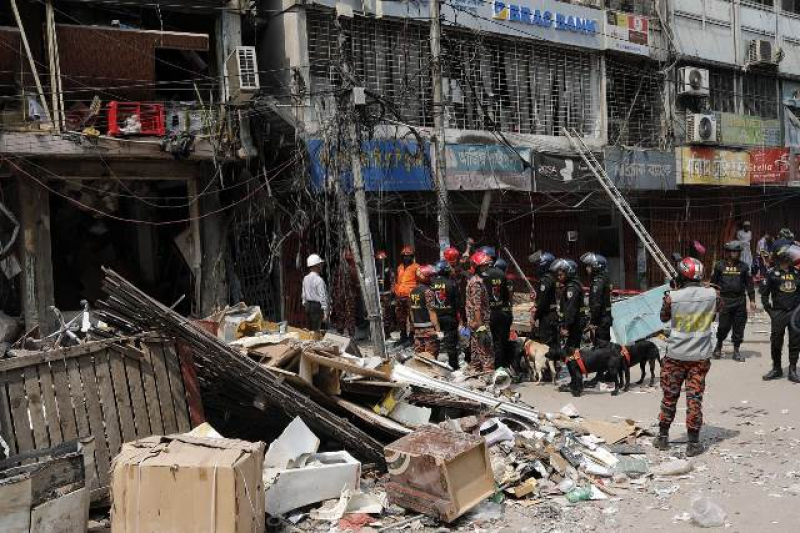- 2 cops among 4 hurt in clash outside Indian Assit H.C. in Ctg |
- Inqilab Moncho urges people to avoid violence |
- Hadi’s death: Prothom Alo, Daily Star offices set afire |
- সন্ধ্যায় পৌঁছাবে হাদির মরদেহ, জানাজা শনিবার |
- সন্ধ্যায় পৌঁছাবে হাদির মরদেহ, জানাজা শনিবার |
No explosive, sabotage found in Siddique Bazar blast: Police

Gulistan explosion - rescue operation goes into third day.
Jehangir Hussain
Accumulation of human waste biogas; leakage in Titas Gas line and powerful AC gas in glass-enclosed sanitary showrooms could cause the explosion at Siddique Bazar, Old Dhaka, the bomb disposal team of the police's Counter-Terrorism and Transnational Crime (CTTC) unit said on Thursday.
Three days after the explosion death toll rose to 21 as rescuers retrieved the last missing dead on Thursday.
After recovering the body of 38-year old Mehedi Hasan Swapan, the manager of Bangladesh Sanitary at around 12:15 pm it was sent to Dhaka Medical College Hospital (DMCH).
Vice Principal of the Fire Service Training Complex Anwarul Haque said, “The family of deceased Swapan identified the body. Bangladesh Sanitary was situated on the basement of the building.”
Currently, 27 victims of the explosion are hospitalised with injuries, nine of them in critical conditions.
The bomb disposal team of the CTTC unit of the police has given their opinion after inspecting the ground and observing the overall situation regarding the explosion at Siddique Bazar Queen Sanitary market.
On Thursday, Dhaka Metropolitan Police (DMP) gave the information to reporters.
According to the building owners, there is a narrow space between the Queen Sanitary market and the BRAC Bank building. Septic tank of human waste and AC remained installed in that space. The blast completely damaged the side walls of the septic tank.
CTTC said, because of not proper maintenance of sanitation in the building, human wastage can transform into bio gas, which might explode due to various reasons and cause extensive damage.
According to DMP, once the basement was used as a kitchen using Titas gas. After the commercial gas line was handed over to Titas Gas the residential lines on the other floors of the building are still there. Gas line leakage could be the reason for the explosion.
The building housed many sanitary shops in the basement and other floors that used powerful Air Conditioners. CTTC assumes, if the ACs were not serviced from time to time, it could also cause explosions.
As the building is under the surveillance of many CCTV cameras, it is almost impossible to store huge amount of explosives required to cause the explosion.
The actual cause of the blast is being investigated separately by the Fire Service, Bangladesh Army and the CTTC.
After examining various aspects, they will come to a logical conclusion and give a report.
jehangirh01@gmail.com

